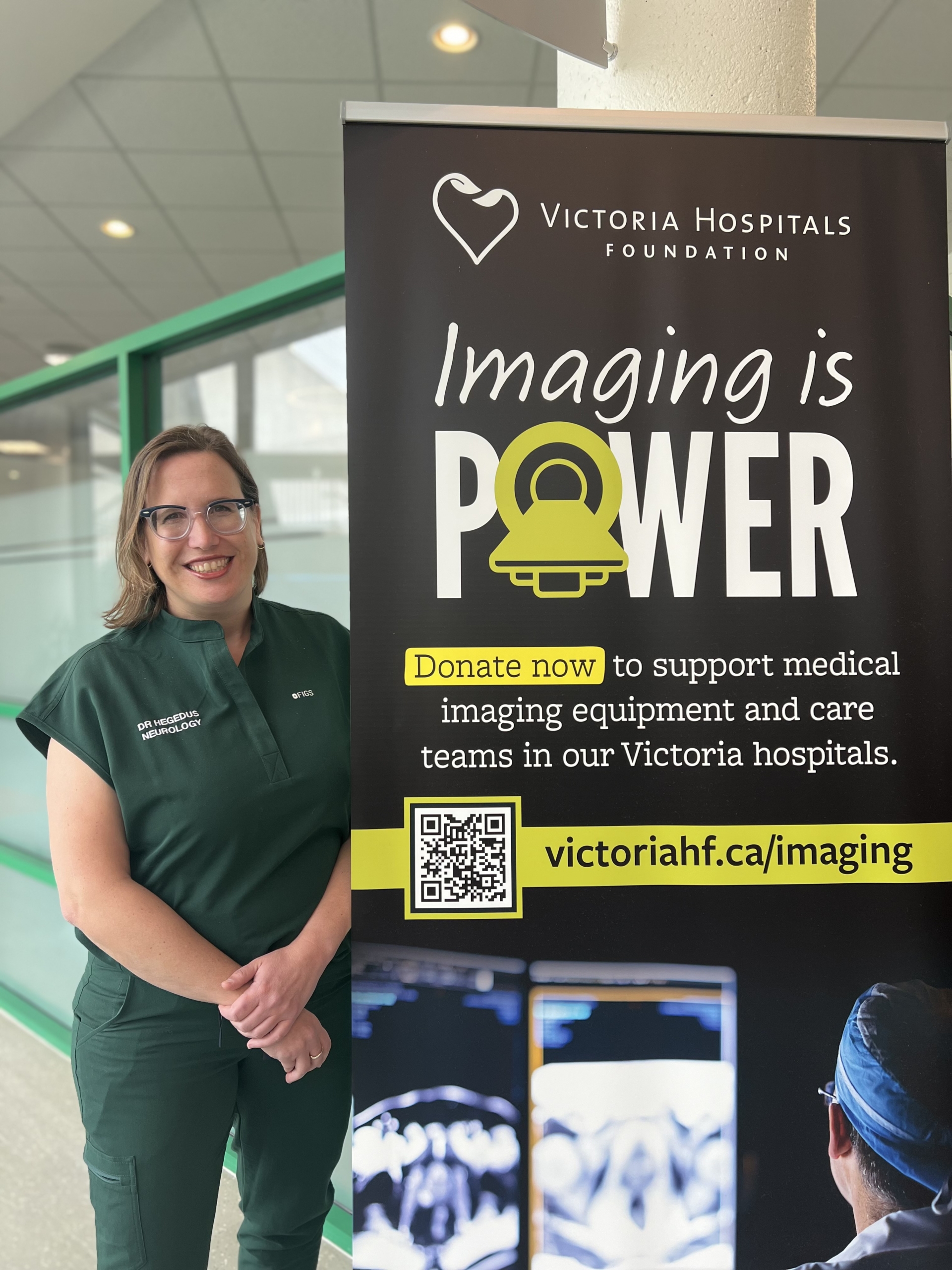
Time is brain when it comes to treating strokes! Stroke is the second most common cause of death in the world, and a leading cause of disability in North America. Our goal is to treat stroke early in order to save lives and restore patients’ independence. The ability to scan patients with stroke symptoms immediately upon arrival to the Emergency Room is crucial to their treatment as it identifies the cause of stroke and determines their treatment pathway in real time. If we can ensure patients receive a CT scan as soon as they present to the ER, we can treat them without delays and hopefully prevent disability. That’s exactly what we were able to do in Lindsay’s case.
When Lindsay arrived at Victoria General Hospital on August 1, 2022, she couldn’t move the left side of her body. Lindsay was taken emergently to the CT suite to be scanned on arrival. As soon as the radiologist and I looked at the scan, we could see that one of the small arteries going to the cerebellum, a part of the brain responsible for smooth movement, had a tear. This tear was causing a disturbance in the flow of her blood to the brain and created a clot (much like a rock in a river impedes water movement and encourages the build up debris). Using the CT scanner helped us make the diagnosis of a clot causing a stroke and informed our emergent decision to administer Tenecteplase or TPA. If the clot busting medication TPA is given with the first 4.5 hours of a patient’s stroke, it improves their chances of a better outcome, and the sooner we give it the higher the chances are of restoring blood flow to the brain. Thanks to the images, I knew exactly what was happening in Lindsay’s brain and could make the correct decision for her in real-time.
A follow-up scan the next day confirmed that the medication was successful. In October 2022, Lindsay had another CT scan, to ensure the tear had healed and there was no additional clotting.
To supporters of the Victoria Hospitals Foundation, thank you for giving care teams access to these improved tools 24/7. For every 15 minutes that stroke care is delayed, it can greatly affect whether the patient will go home independently. It is because of imaging that Lindsay did not suffer a stroke, and can share her story with you today. We cannot underestimate how important the CT scanner is. Having access to a functioning machine that produces the highest quality pictures is simply vital in giving our patients the best chance possible of a full recovery.
— Dr. Janka Hegedus
Stroke Neurologist, Medical Lead for Stroke, Victoria General Hospital





